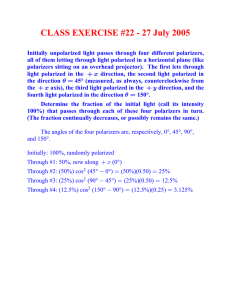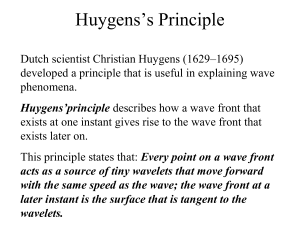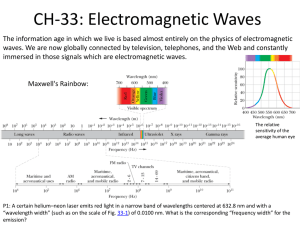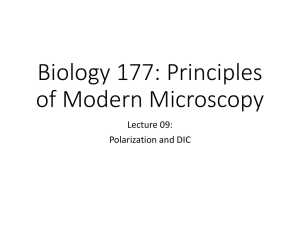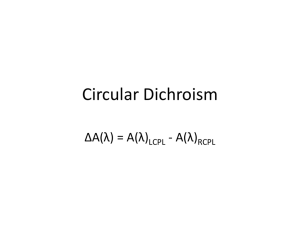Polarization and DIC
advertisement
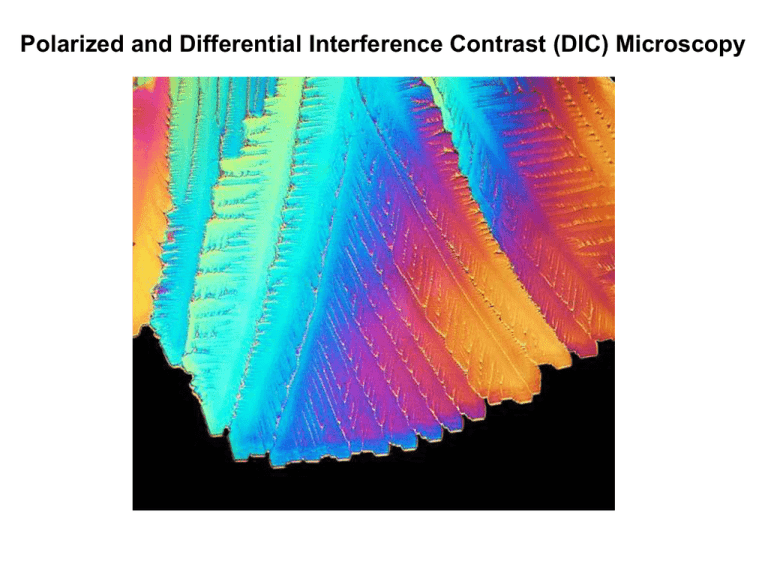
Polarized and Differential Interference Contrast (DIC) Microscopy The term “polarized” light refers to the properties of light waves in relation to the plane in which the waves oscillate. A polarizer can be thought of as an optical “screen” in which very fine slats are made which only allows those waves whose oscillations coincide with the orientation of the slats to pass through and to exclude all waves that oscillate in other planes. Wavelengths of light moving in the same plane are said to be “coherent” By using polarizers arranged in orthogonal fashion all light can be blocked. In such cases the filters are said to be “cross-polar” Thin slice of granite in polarized showing orientations and positions of different grains. Birefringence of microtubules during cell division. The silica spicule spines of pluteus larvae of most echinoderms are naturally birefringent and can be easily seen in a polarized microscope. Mitotic Spindles Striated Muscle (actin and myosin polymers) Plant Cell Walls (cellulose and lignins) Some protists with crystalline Fat bodies in epithelial cells containing structures in their cytoplasm droplets of lipoproteins and proteins which can be seen because of the birefringence of the lipid, which produces maltese cross configurations. The Wollaston prism splits the entering beam of polarized light into two beams traveling in slightly different directions. The Wollaston prism is composed of two quartz wedges cemented together, from which emerging light rays vibrate at 90 degrees relative to each other with a slight path difference. A different Wollaston prism is needed for each objective of different magnification. DIC (Nomarski) Image

